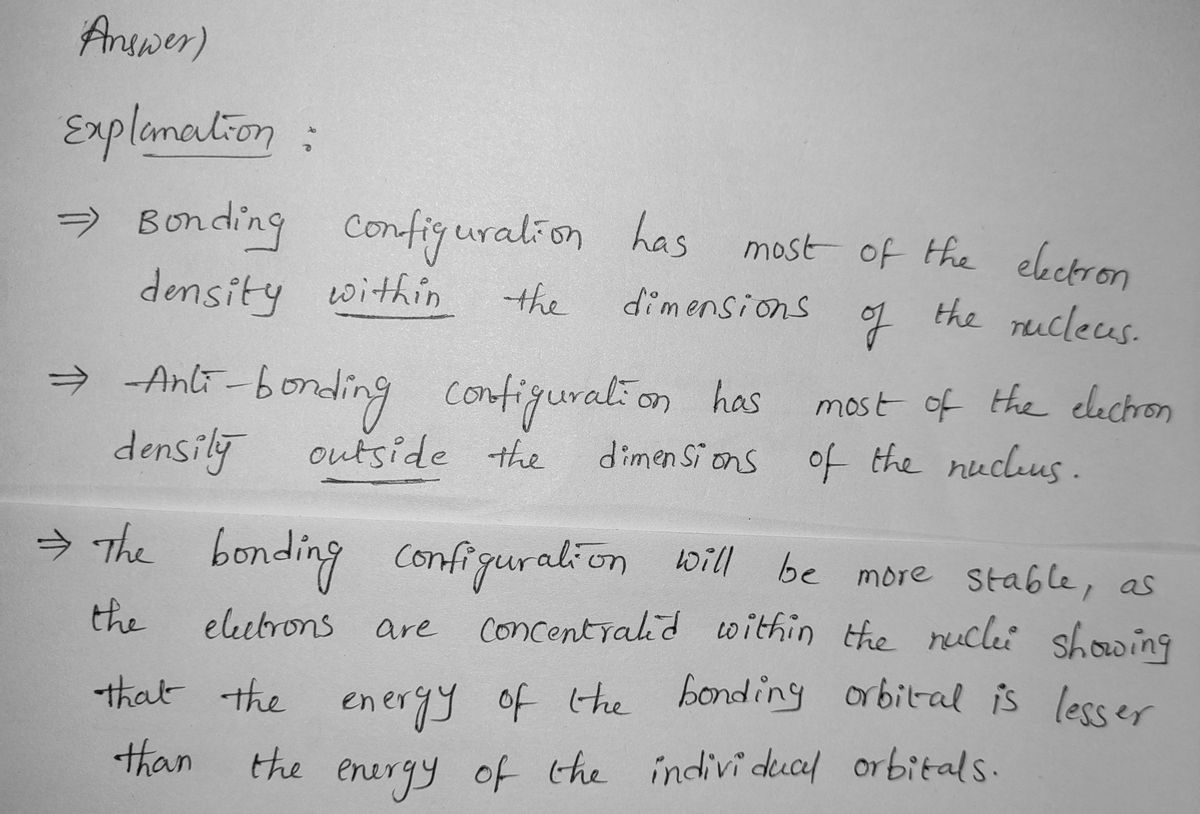The energy versus separation for a diatomic molecule in the LCAO technique indicated that a bonding wave function resulted in a deep minimum in potential energy, resulting in an equilibrium state. The antibonding wave function has no minimum on the energy-separation curve. Explain qualitatively how the charge distribution (or, if you prefer, the 1912 distribution) changes between the bonding and anti-bonding configurations, and why the bonding configuration is more stable. To put it another way, where and why is the electron density located?
The energy versus separation for a diatomic molecule in the LCAO technique indicated that a bonding wave function resulted in a deep minimum in potential energy, resulting in an equilibrium state. The antibonding wave function has no minimum on the energy-separation curve. Explain qualitatively how the charge distribution (or, if you prefer, the 1912 distribution) changes between the bonding and anti-bonding configurations, and why the bonding configuration is more stable. To put it another way, where and why is the electron density located?
Related questions
Question
The energy versus separation for a diatomic molecule in the LCAO technique indicated that a bonding wave function resulted in a deep minimum in potential energy, resulting in an equilibrium state. The antibonding wave function has no minimum on the energy-separation curve. Explain qualitatively how the charge distribution (or, if you prefer, the 1912 distribution) changes between the bonding and anti-bonding configurations, and why the bonding configuration is more stable. To put it another way, where and why is the electron density located?
Expert Solution
Step 1

Step by step
Solved in 2 steps with 2 images
